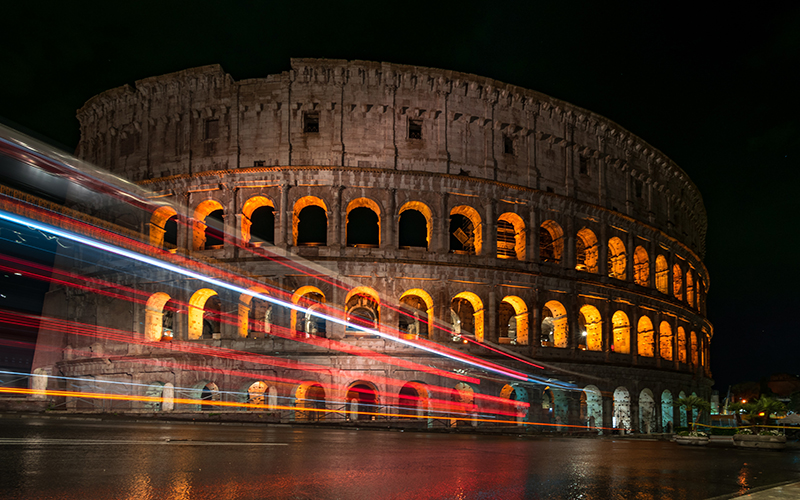Influence of soundscapes and lightscapes on cultural heritage perception
The novelty of this research is to identify a procedure aimed at evaluating the influence that acoustic and lighting conditions can induce on the people perception by a culturally significant place.

14 May 2021
- Overview
“I am very excited for this opportunity to bring together expertise in different disciplines, such as soundscape, lighting and heritage, and build on this project to boost future collaborations. In a period where travel and mobility are very limited, the Cities Partnerships Programme adjusted to current circumstances and provided us with resources to support workshops and other activities online. I think this is perfectly aligned with UCL’s current ‘remote, not distant’ philosophy: London and Rome are less distant thanks to this scheme!”
Soundscape studies are promoting a user-centred approach to the characterization and management of acoustic environments in cities; there are now several available protocols to gather perceptual data about how people experience the soundscapes in cities, and the most common tool is the “soundwalk”, a procedure where groups of people walk and stop at locations and assess the acoustic environments based on some sound-related attributes (e.g., calm, pleasant, vibrant, chaotic, etc.). On the other hand, similar procedures for the Light environment are missing, and references in literature on the topic are scarce. Although there are no regulations or technical specifications for the lightscape similar to those existing for the soundscape, lighting conception moved from mere infrastructure designed by necessity to one of the main aspects that need to be considered within an urban project. The relationship between environment and lighting has been the main topic of several scientific studies, mostly conducted in France since the 1990s, aimed at highlighting the importance of the night landscape and introducing a new design approach. Street lighting is a very critical issue, especially in art cities such as Rome. Here, it should not only be considered in terms of presence or amount of light but also in terms of its quality and characteristics (i.e., the spectral power distribution, colour temperature etc.). In this regard, it is necessary to evaluate and analyse the lightscape as well as the soundscape, in terms of the sensations and perceptions induced in the users.
The novelty of this research is to identify a procedure aimed at evaluating the influence that different acoustic conditions together with the lighting ones can induce on the people perception by an artistically significant and relevant place, such as the archaeological area of the Colosseum in Rome (which includes the archaeological site called “Fori Imperiali”).
The final goal is to define a procedure starting from the consolidated one for the soundscape analyses by implementing questionnaires and measurements with assessments also related to the lighting environment.- Impact
- Final webinar to present results of the study, with invited speakers from industry and professional bodies in UK and Italy for urban sound and light environments – scheduled for June 21st, 2021 via Zoom.
- Online workshop with experts from UCL and partners in Roma TRE and MSc students from Roma TRE to define a protocol for subjective data collection for a lightwalk, starting from the framework of the soundwalks (ISO/TS 12913-2:2018).
- Soundwalk & Lightwalk led by partners in Rome TRE with students to gather perceptual data on soundscape and lightscape in the archaeological area of the Colosseum.
- Collaborators
- People
- PI: Dr Francesco Aletta
- Co-PI Dr Tin Oberman
- PhD Student: Ms Lorna Flores Villa
- Links
- https://www.ucl.ac.uk/global/news/2021/apr/recipients-ucl-cities-partnerships-programme-funds-202021
- https://www.ucl.ac.uk/global/cities-partnerships-programme
Photo by Peter Mizsak on Unsplash
 Close
Close

